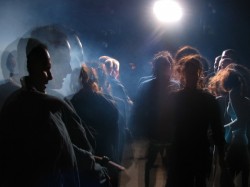5 Dangerous LSD Drug Effects
What is LSD?
LSD (d-lysergic acid diethylamide) is manufactured from lysergic acid found in ergot, a grain fungus which typically grows on rye. LSD is odorless, colorless, and tasteless. It is abused for its hallucinogenic effects and sold in a variety of formulations such as tablets, capsules, liquid, gel squares, or embedded in candy under names commonly known as acid, blotter acid, window pane, microdots, Loony toons, Sunshine, and Zen. It is often used inconnection with “raves,” nightclubs, and concert settings.
LSD is classified as a Schedule I Hallucinogenic and was prohibited under the Controlled Substances Act (CSA) after rampant abuse in the 1960’s. According to a 2013 report by the Drug Enforcement Administration
(DEA), “LSD induces a heightened awareness of sensory input that is accompanied by an enhanced sense of clarity, but reduced ability to control what is experienced. The LSD trip is made up of perceptual and psychic effects.”

LSD is a very powerful hallucinogen.
LSD drug effects are dependent on the dose and may affect some users differently and also, may present a different effect each time it is used. This is where the 5 Dangerous LSD Drug Effects come into play.
What are 5 Dangerous LSD Drug Effects?
- The physical LSD drug effects include: higher body temperature and sweating, dilated pupils, nausea or loss of appetite, increased heart rate, blood sugar, and blood pressure, sleeplessness, tremors, and dry mouth. In most cases these may not be considered a relevant danger, but for individuals with prior history of medical concerns, they may be at risk.
- Since LSD is prohibited from any legal distribution, monitoring of the chemical manufacturing process is unregulated. Users can not be sure of the actual contents of the drug and have no idea what type of effect it may present. Users are unable to calculate the dosages and therefore, the effects are unpredictable. Users can swing from one mood to the next or feel several emotions at once.
- High doses of LSD can induce “bad trips” where the user experiences intense anxiety or panic, confusion, or combative behaviors. Distorted perception of time and depth with lack of control may induce changes to the shape of objects, movements, color, sound, touch, and own body images. These experiences may become severe, terrifying thoughts and feelings, fear of losing control, fear of insanity and death. If large enough doses are taken, the drug produces delusions and visual hallucinations that could last for 10 to 12 hours.
- Under the influence of LSD, the user loses their ability to make sensible judgments and see common dangers. They are more likely to participate in risky behaviors that make them susceptible to personal injury, which can, possibly, be fatal.
- After an LSD trip, the user may suffer acute anxiety or depression, severe fatigue, or they and may experience frightening flashbacks known as Hallucinogen Persisting Perception Disorder (HPPD). In some cases, especially after long term use, the effects of LSD can last for days or months after taking the last dose.
- Related Articles
 Symptoms of LSD Abuse -
LSD abuse leads to hallucinations, sensory distortions, and a general loss of touch with reality. Sometimes it is very apparent when a person is high, other times it may be concealed.
Symptoms of LSD Abuse -
LSD abuse leads to hallucinations, sensory distortions, and a general loss of touch with reality. Sometimes it is very apparent when a person is high, other times it may be concealed.  LSD Effects -
LSD, more commonly known as Acid, is a hallucinogenic drug that significantly impacts the chemical makeup of a user’s brain causing them to have a distorted perception of reality. The effects of LSD can cause a person to forget who they are and can cause them to act out in a dangerous manner.
LSD Effects -
LSD, more commonly known as Acid, is a hallucinogenic drug that significantly impacts the chemical makeup of a user’s brain causing them to have a distorted perception of reality. The effects of LSD can cause a person to forget who they are and can cause them to act out in a dangerous manner.  How Long Can LSD Stay in Your System? -
Although LSD isn't traceable after about one day, the psychological aftereffects can linger for days or even months.
How Long Can LSD Stay in Your System? -
Although LSD isn't traceable after about one day, the psychological aftereffects can linger for days or even months.  What You Must Know About The Signs of LSD Use and a Bad Trip -
It can be hard to spot someone who is abusing LSD, but here are some tips of LSD use so that you can be helpful in their time of need.
What You Must Know About The Signs of LSD Use and a Bad Trip -
It can be hard to spot someone who is abusing LSD, but here are some tips of LSD use so that you can be helpful in their time of need.  Signs of LSD Use You Can’t Ignore -
Learn how to spot the symptoms of LSD abuse so that you can help a loved one in need.
Signs of LSD Use You Can’t Ignore -
Learn how to spot the symptoms of LSD abuse so that you can help a loved one in need.